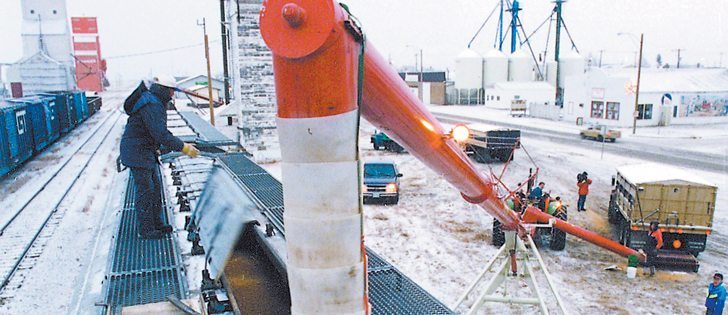The door to the U.S. market isn’t shut, but marketers say it’s a lot harder to squeeze through than it was at harvest time.
However, there are still opportunities to move crop south to avoid the congested Canadian system and find decent prices.
“We’ve been doing mega-amounts of rail cars on short lines,” said grain broker Allan Johnston of Welwyn, Sask. “It’s almost all U.S. buyers.… It’s congested but it will work through the system.”
Brian Voth of Agri Trend Marketing in Ste. Agathe, Man., said the U.S. corn and soybean harvests have now caused congestion in the U.S. grain elevator and railway system. However, end users are still trying to draw in the grain they need, which is helping Canadian prairie grain pass through the clogs.
Read Also

Volatile temperatures expected for this winter
DTN is forecasting a lot of temperature variability in the Canadian Prairies this winter. Precipitation should be close to average.
“There’s been a lot of (winter wheat and oats) going down,” said Voth.
“The quality was high enough that it could go straight into milling.”
Low protein levels in U.S. wheat created a powerful demand for high protein wheat and durum from Canada. Oats are in short supply in the core Midwest processing region.
Voth said producer cars have been a terrific way to move grain this fall because of the allocation preference they receive. Some of his clients own a producer car loading site and have used it well this crop year.
“When they order producer cars, they’re at the facility in seven to 10 days, they load them and they’re out,” said Voth.
“We’ve managed to get some good deals, both going into the United States and Thunder Bay.”
Johnston said he has done lots of business shipping rail cars with high protein and high quality prairie grain to U.S. buyers, but hasn’t been shipping by truck.
“I think the demand is further south (than can be affordably served by truck),” said Johnston.
“We haven’t had anyone tell us they want to pick it up.”
Voth has been able to ship directly by truck to U.S. buyers because southeastern Manitoba is much closer to processors than the rest of the Prairies.
“The trip isn’t that big a deal to us,” said Voth.
The U.S. market was a handy relief valve for prairie crops during the rush of harvest as the Canadian system filled up with grain but before the big U.S. corn and soybean crops were harvested.
It’s less easy to skip around Canadian problems by going south now that those big U.S. crops are pressing against U.S. transportation system capacity, said Darcy Caners of FarmLink Marketing.
“There doesn’t seem to be a silver bullet for this problem,” said Caners.
“We’ve got enough crop to handle full-out until next crop comes in.”
The system has limited capacity and is having trouble keeping up, whether crop moves by producer car or through the elevator network.
Johnston said he thinks farmers need to actively move what they can because logistics relief won’t come soon.
“I’m encouraging growers to get the heck at it because the system is so overloaded,” said Johnston.
To him, the happiest phenomenon this year is seeing how well the short lines and producer car capacity are being used without the influence of CWB.
“We used to have to line up and get a quote and wait for the wheat board to allocate the cars,” said Johnston.
“Now we just order them.”
















